
Find out how much it costs to refinish your porcelain sink and the factors that influence the final price to make it look like new, including size, type, and labor.
Balance price, durability, and ease


Acrylic tubs are made from clear plastic that’s reinforced with fiberglass.
Pros of this tub include affordability, high durability, and ease of installation and maintenance.
These tubs also have excellent heat retention, which helps keep bathwater warm.
Disadvantages include susceptibility to scratches, stains, and flexing.
Talk to a bathtub installer to see if an acrylic bathtub is right for your remodel.
If you love escaping to a relaxing bathtub after a long day, an acrylic bathtub is one of the most common choices for homeowners on a budget. This type of tub is sleek, lightweight, versatile, and durable—but will it deliver the results you need for your bathroom? Understanding the pros and cons of acrylic tubs will help you make confident decisions as you plan your bathroom upgrades.
Despite the name, an acrylic tub isn’t made from 100% acrylic materials. These tubs are made from clear acrylic plastic reinforced with fiberglass for durability. Acrylic bathtubs are one of the most common types of bathtubs on the market, and you’ll find several models at your local hardware store—from alcove and freestanding tubs to soaking tubs and corner units.
A bathtub installation professional can break down the benefits and downsides of each tub material so you can make the right choice for your bathroom and budget.
| Pros of Acrylic Tubs | Cons of Acrylic Tubs |
|---|---|
| Low-maintenance | Can scratch and stain |
| Significant heat retention | Damaged by strong cleaners |
| Simple installation | Limited high-end models |
| High durability | Prone to flexing |
| Cost-effective | Dulls over time |
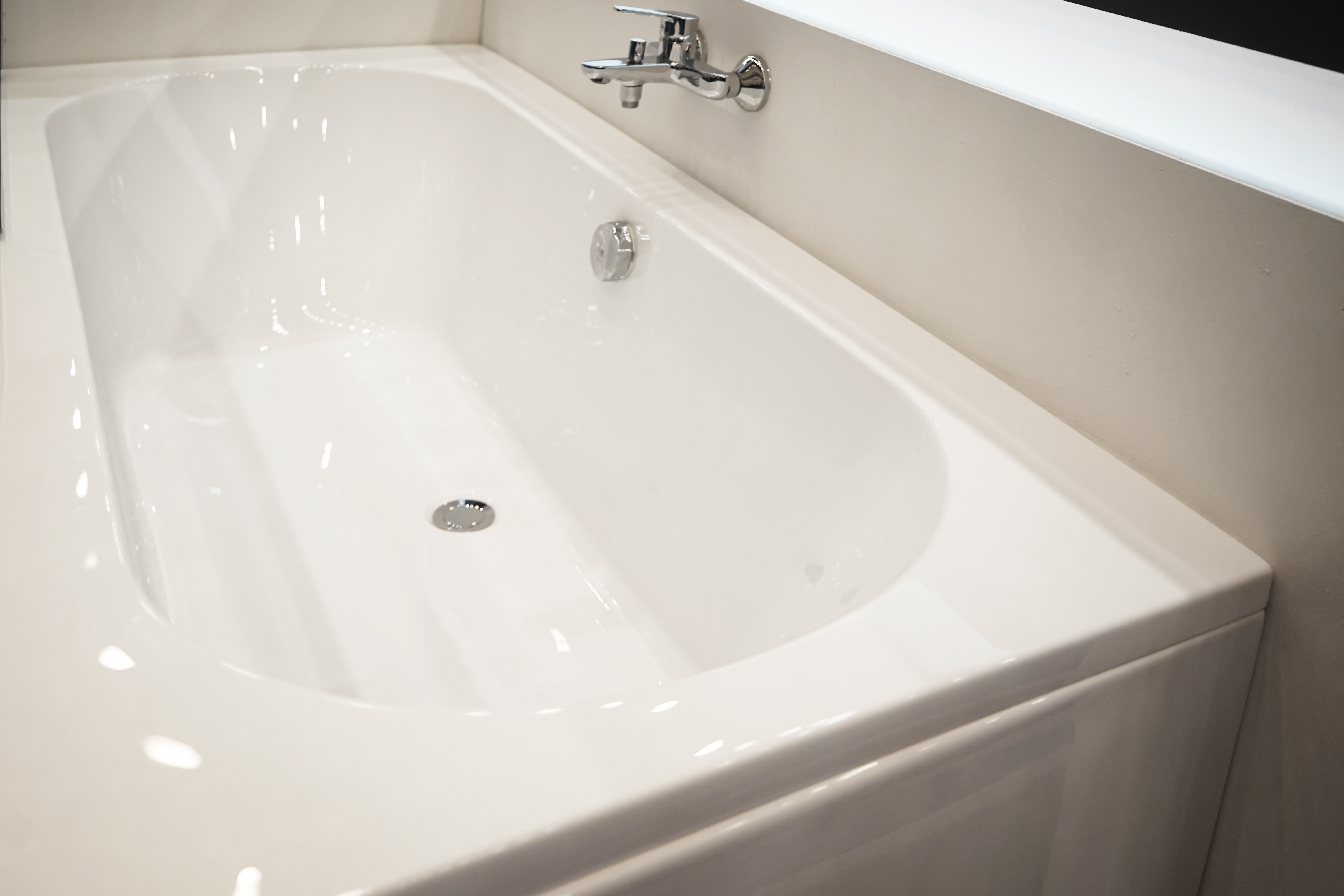
Acrylic tubs are low-maintenance, simple to install, and budget-friendly. They offer just the right amount of heat retention to keep your bathwater relaxing and warm. Here are the details on the benefits.
Acrylic bathtubs are some of the easiest to maintain and repair. For the most part, all you have to do is clean your tub with gentle bathroom cleaners. These tubs are nonporous so they resist mold and mildew. Scratches can happen, but a contractor can fill them in or polish them away.
Acrylic bathtubs have moderate heat retention that keeps tub water warm for longer periods of time. In addition to making bath time cozier, it helps save on water bills during long baths because you won’t need to constantly refill the tub. It’s also a plus for people who are sensitive to cold water, like children or older adults.
Acrylic tubs are lightweight and portable, making them easier to install than heavy materials like cast iron or natural stone. Your bathtub installer will be able to easily carry an acrylic tub up the stairs, maneuver it in your bathroom, and install it without needing to reinforce the floor.
Acrylic tubs are reinforced with fiberglass, so they’re extremely durable and resistant to chips. On average, you can expect your acrylic tub to last 15 years—but it could last up to 30 years if you stay on top of maintenance.
Acrylic bathtubs are wallet-friendly and only slightly higher in price than fiberglass. They can cost thousands less than a high-end solid surface tub. Expect to spend $1,000 on average to install an acrylic bathtub, which is about half the cost of the average bathtub replacement.
Despite their durability, acrylic tubs don’t offer the same quality as other tubs, like porcelain or ceramic. These tubs can scratch, stain, flex, or dull as they age. Luckily, proper maintenance and installation can help prevent some of these issues. Here is the down-low on the downsides.
Though acrylic tubs offer strength, they can scratch or stain. Staining is common in older tubs, in tub-shower combos where homeowners dye their hair, or in tubs that are not regularly cleaned. To reduce the chance of unslightly scratches and stains, stay on a cleaning schedule.
Acrylic tubs are sensitive to certain cleaners that can scratch or corrode the surface. Avoid harsh chemicals and hard scrub brushes. Instead, clean your tub with white vinegar, water, and a soft sponge.
While acrylic alcove tubs are a bathroom staple, there are not many high-end options on the market. If you want to create a luxury bathroom in an upscale property, other bathtub materials, like ceramic, cast iron, copper, or natural stone, are considered higher-end.
Acrylic bathtubs can flex, or bend slightly, when weight is applied. This is because it’s a naturally flexible material and relatively lightweight, but proper installation should prevent this issue. It may, however, be more prominent in lower-quality tubs.
Acrylic tubs can have a dull or plasticky look compared to ceramic or porcelain, and it can worsen as your tub ages. It doesn’t bother every homeowner, but some prefer shinier and brighter materials for their bathroom design.
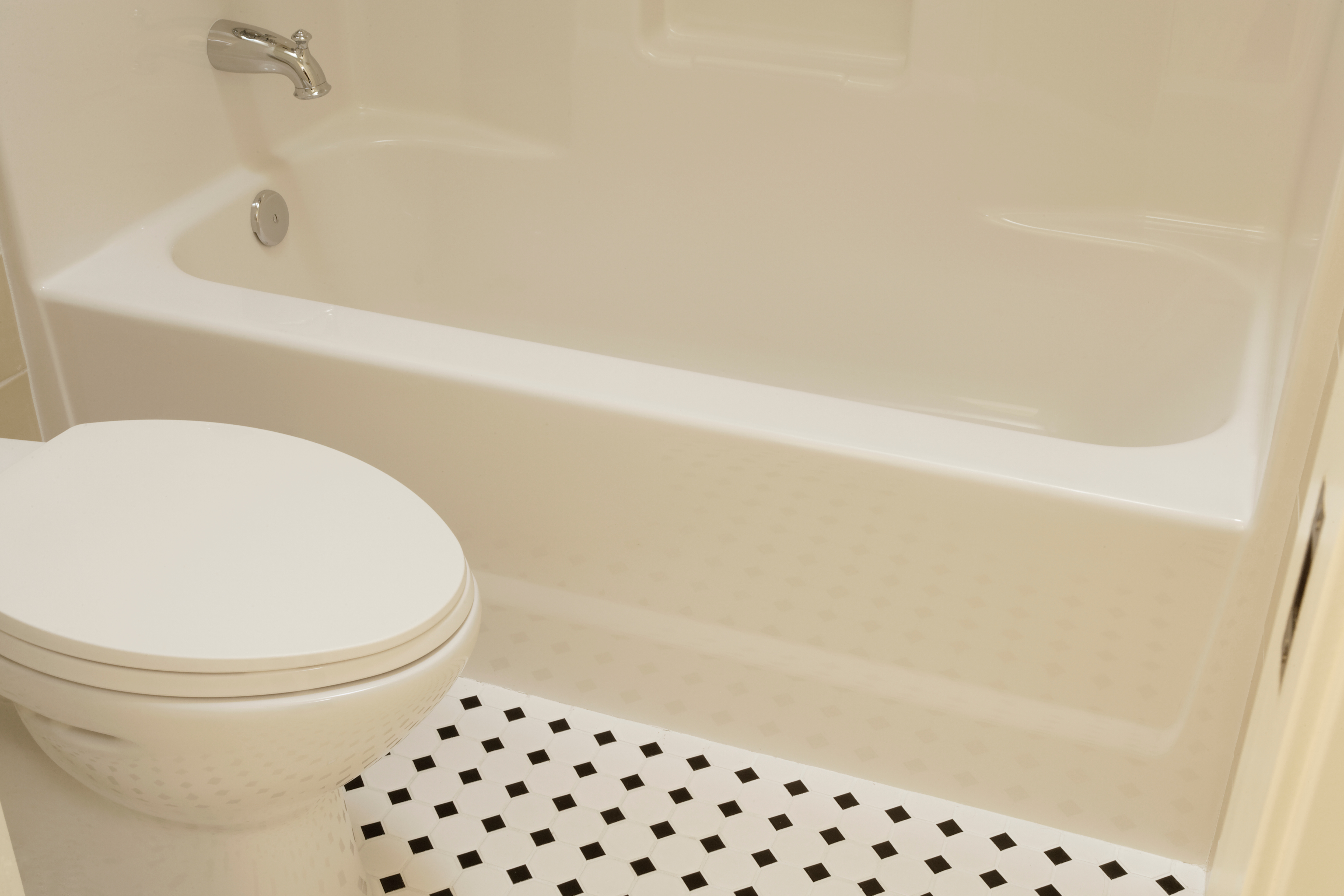
When you’re choosing the best bathtub for your bathroom, consider every alternative before settling on the one for you. Acrylic is one option out of many, though it is one of the most popular and budget-friendly. Here are some alternatives:
Porcelain: Most porcelain tubs are made from enameled steel, which is a base of steel covered in a layer of porcelain enamel. This gives the steel a glossy surface that’s easy to clean but highly durable beneath the surface. Porcelain tubs have a greater resale value than acrylic tubs.
Ceramic: Ceramic is a high-end tub material renowned for its luxe look. It’s durable, easy to maintain, and ever the classic, but it comes with a high up-front cost.
Fiberglass: When it comes to fiberglass versus acrylic, fiberglass tubs are almost always more affordable than acrylic tubs. However, you’ll trade price for durability and longevity, as most fiberglass tubs only last 10 to 15 years.
Natural stone: Natural stone bathtubs are the epitome of luxury, but they’re not the easiest to maintain. You’ll need to reinforce your floor to handle the weight and use special cleaners. The porous surface can also harbor mold, so it requires regular sealing.
Solid surface: Solid surface tubs are made from composite natural minerals and resins. This makes them nonporous and easy to clean, while retaining superior durability. The look is similar to a smooth natural stone—without the same issues.
Cast iron: Cast-iron tubs retain heat better than acrylic tubs. This option costs more, but it’s resistant to cracks and scratches, and you can refinish your tub when it starts to wear.
Acrylic tubs are an excellent low-maintenance option for a wallet-friendly bathroom remodel. They come in a range of sizes and shapes, so you can find one that fits your exact vision. However, if you want something a little higher-end, you may want to look into alternatives. Porcelain can give you a classic look, while cast iron or natural stone offer more spa-like luxury.
A local bathtub installation pro can take the lead on your remodel and help you curate an all-around look for your bathroom that fits your vision—acrylic tub or not.
From average costs to expert advice, get all the answers you need to get your job done.

Find out how much it costs to refinish your porcelain sink and the factors that influence the final price to make it look like new, including size, type, and labor.

Bathtub refinishing costs are relatively inexpensive and can make your bathroom look like new. Our guide gives you the information to learn more about this process.
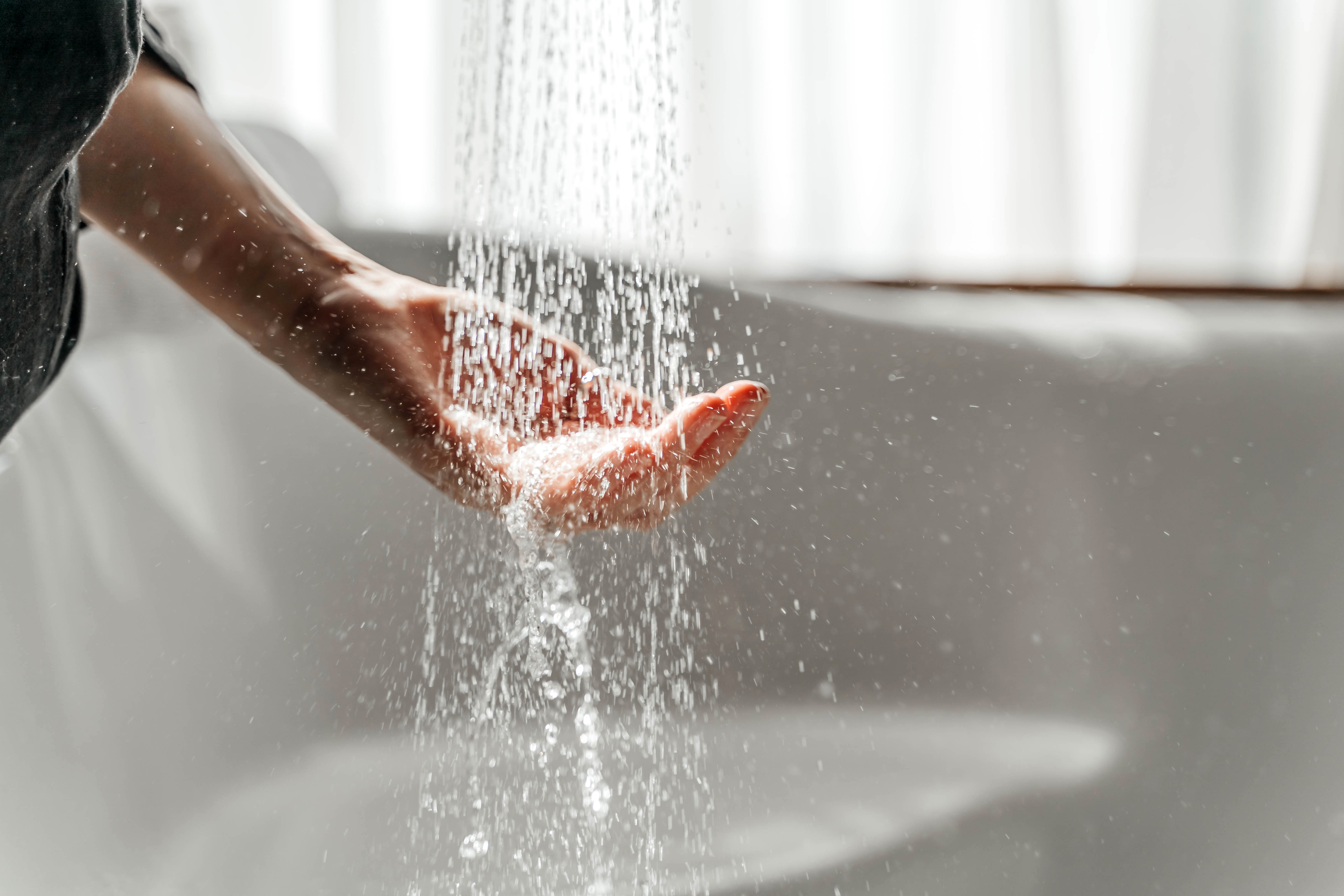
There’s really only one solution when the finish starts to peel off. We’ll show the reasons why your bathtub is peeling and how to fix it.

Whether upgrading to a new tub or replacing an old tub with a shower, you’ll need to know how to remove a bathtub to make room.
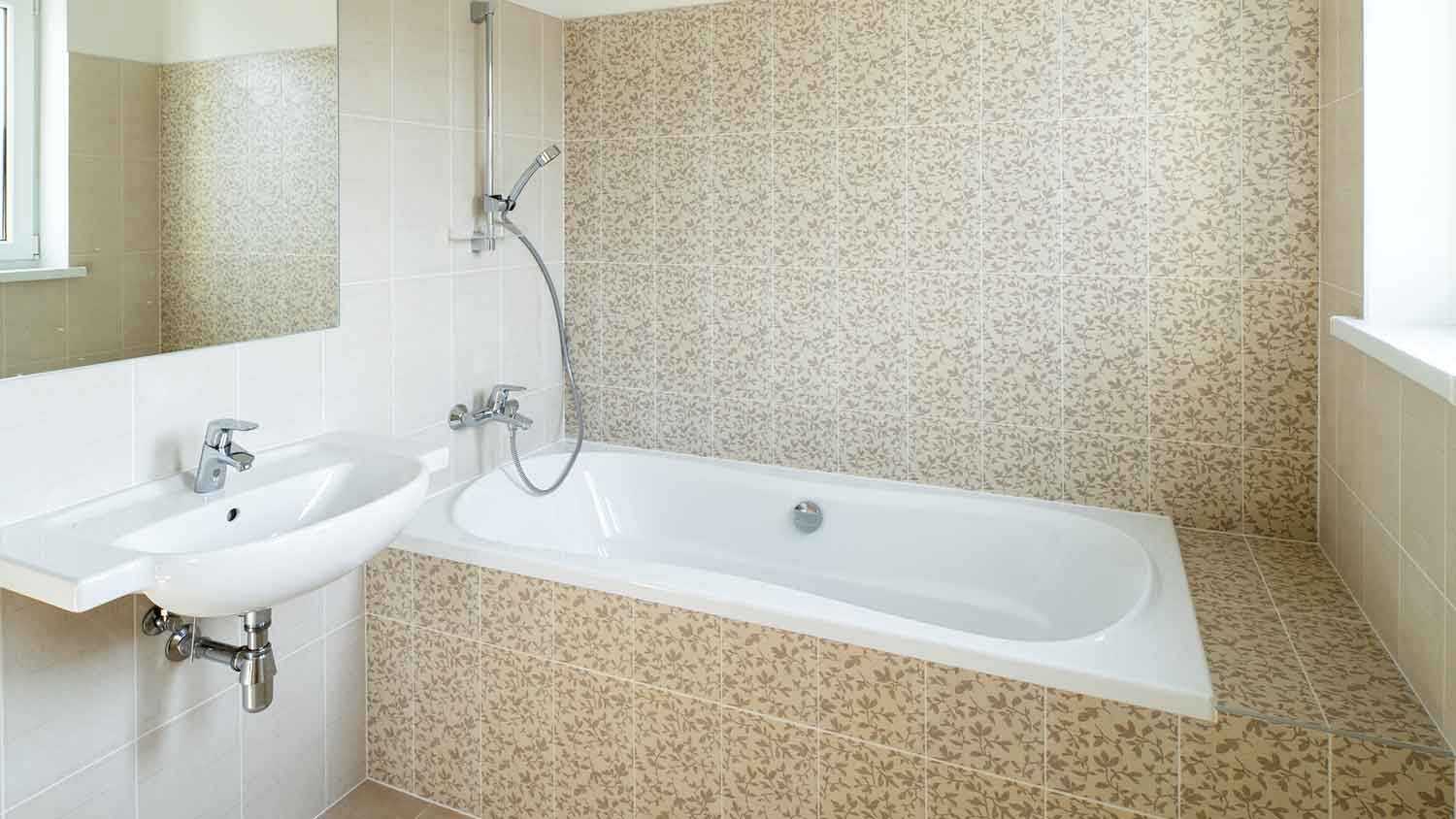
The short answer is yes, you can paint a fiberglass tub. But you need the right preparation and paint to transform your bathtub successfully.
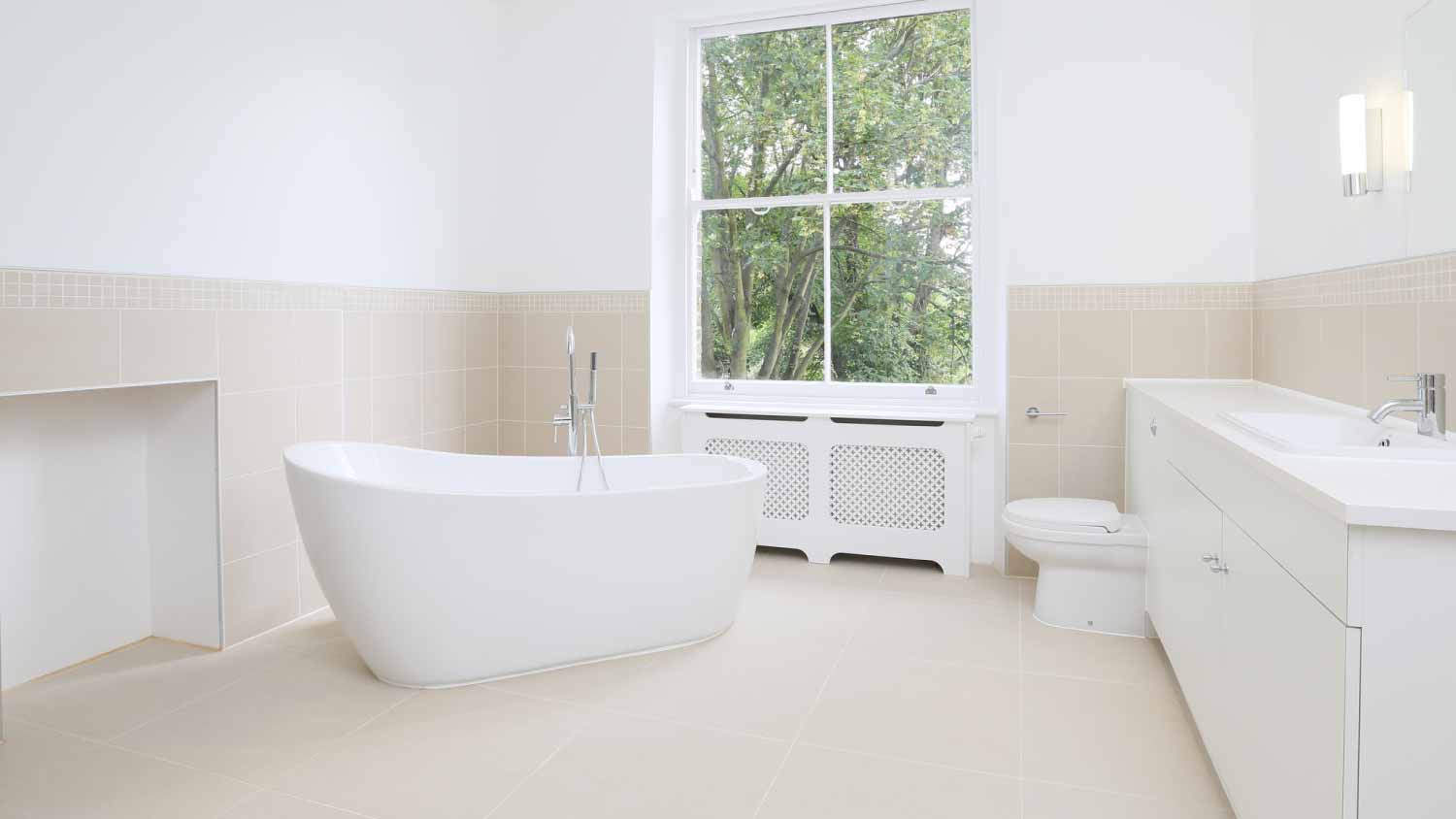
If you're looking for an economical way to spruce up your bath or kitchen, here are the bathtub refinishing questions you should be asking a contractor.